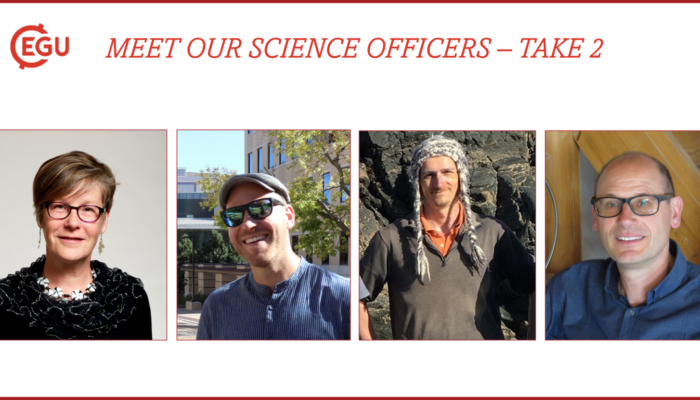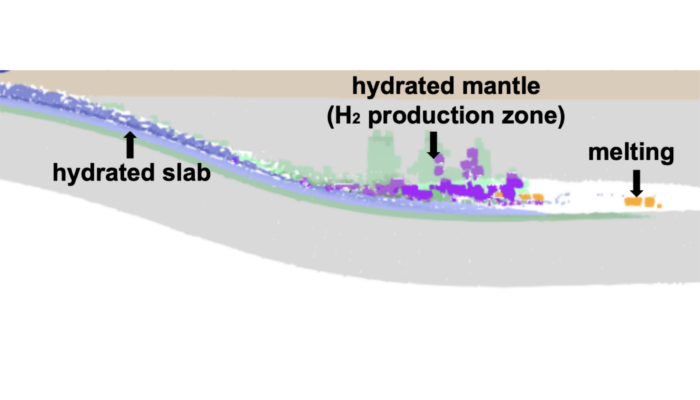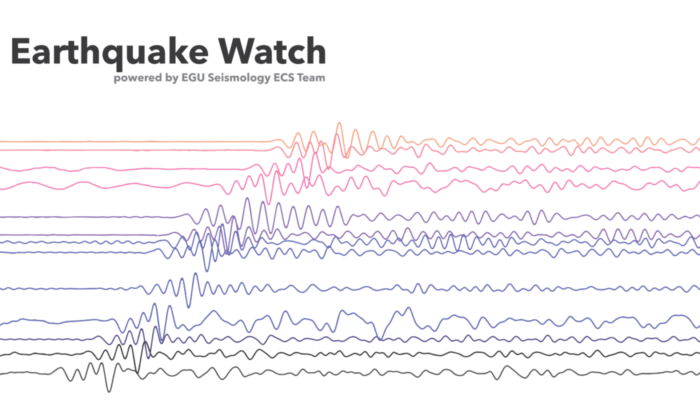Increased maritime transport in the Arctic, facilitated by the reduction in sea ice cover, is causing tremendous harm to an already vulnerable part of the world. Insufficient regulation of Arctic shipping has detrimental environmental effects on a global scale. These effects include, e.g. underwater noise pollution, oil spill risk and threats to the global climate. But did you know what role regul ...[Read More]
Geodesy
Expanding the picture: What does a geodesist look like?
Think of a geodesist. What names come up in you? What do they look like? Do they have glasses? Is their hair short or long, grey or blonde? What’s their country of origin? Can you imagine them wearing a dress? And how come so many of them run marathons? I’m joking, but hopefully you get the picture. Geodesists, especially the ones in power positions, are not the most diverse bunch of people. Since ...[Read More]
Geochemistry, Mineralogy, Petrology & Volcanology
Meet our EGU-GMPV Science officers – take 2
As we approach the EGU General Assembly, we remember that there are a number of people working hard to ensure that sessions on our favourite topics are secured. This also ensures that topics of interest to as wide a range of scientists as possible are covered. This is why the GMPV Division has representatives from the various fields of geochemistry, mineralogy, petrology and volcanology. Last time ...[Read More]
Geomorphology
AGU Report
by Romano Clementucci, PostDoc, ETH Zurich (Switzerland) Twitter: @RomanoClementu1 | email: rclementucci@erdw.ethz.ch As postdoctoral researchers, advancing our careers often involves attending an international congress. In December 2023, I achieved this goal by participating in AGU23, marking my first attendance after several consecutive years at EGU. It was exhilarating to share my research ...[Read More]
Hydrological Sciences
Join the Early Career Scientist Representative (ECS Rep) Team of the Hydrological Sciences (HS) Division of EGU
With the General Assembly of the European Geosciences Union (EGU) in Vienna (April 14-19) approaching fast, it’s time to assemble the new team to represent Early Career Scientists (ECS) of the Hydrological Sciences Division! We’re looking for a new ECS representative, as well as team members to coordinate social media, our newsletter, online campfires, and to join our fantastic blog team led by B ...[Read More]
Tectonics and Structural Geology
TS Must-Read – Mancktelow (2008): Tectonic pressure: Theoretical concepts and modelled examples
Neil Mancktelow published this Must-Read paper on the concept of “tectonic pressure” in 2008. The paper reviews previous work and theoretical concepts published on this fundamental topic. Additionally, numerical models that estimate the magnitude of tectonic pressure variations are presented for several realistic natural structures, such as folds, boudins, and inclusions. The premise of tectonic p ...[Read More]
Geodynamics
H2 production associated with mantle wedge hydration in subduction zones
Dihydrogen (H2) is a promising source of energy that may allow reducing carbon emissions in industry and transportation. Artificial production methods have been explored, natural sources of H2 (also called white dihydrogen) offer a more eco-friendly and cost-effective production process. In this week’s blog post, Alexis Gauthier, a PhD student from ISTeP, France, is discussing the H2 production pr ...[Read More]
Geochemistry, Mineralogy, Petrology & Volcanology
EGU GMPV ECS Campfires – Tuesday 27th February 11am CET
Mark your calendar! We have prepared the first edition of the ECS Tips Campfire of the Geochemistry, Mineralogy, Petrology and Volcanology division, which will take place on Tuesday 27th February at 11am CET on Zoom. This special edition will be dedicated to Outreach & science communication, during which three scientists will present their outreach activities and have a panel discussion with t ...[Read More]
Seismology
Earthquake Watch: Seismicity in the Reykjanes Peninsula, Iceland
For this Earthquake Watch we are very happy to have Yesim Cubuk-Sabuncu write about the seismicity around the recent eruptions in the Reykjanes Peninsula, Iceland! Yesim is a postdoctoral researcher in seismology at the Icelandic Meteorological Office, Service and Research Division since 2019. She obtained her Ph.D. in Geophysical Engineering at the Istanbul Technical University, Turkey in 2016. L ...[Read More]
Nonlinear Processes in Geosciences
Interviews with Women in Nonlinear Processes in Geosciences: Exploring Inspiration and Challenges
In celebration of Women in Science day, we delve into the experiences and insights of five accomplished women scientists in the field of Nonlinear Processes in Geosciences: Prof. Bérengère Dubrulle, Dr. Vera Melinda Galfi, Dr. Giorgia di Capua, Dr. Meriem Krouma, and Anupama K Xavier. Through a series of interviews, these women share their journeys, addressing challenges faced as women in science, ...[Read More]










